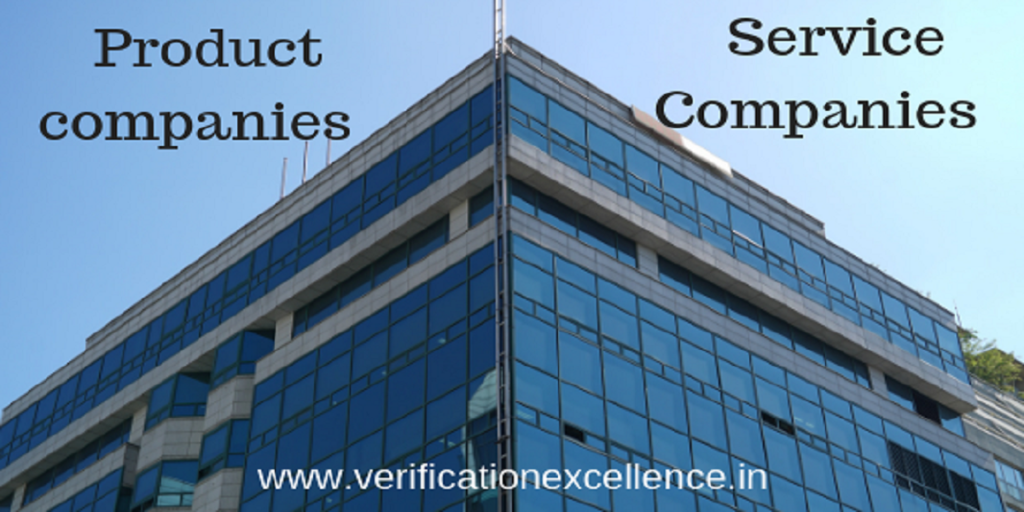There are mainly two types of companies in the VLSI/Semiconductor industry. Quite often entry level engineers gets confused between these and wonder what are the differences and which one is better in terms of career. Here are some details which hopefully will give you some insights.
Product Companies :
The companies designs and develops products for one or more applications focusing one or more markets. The product could be a single chip (ASIC/SOC) or a platform solution with multiple chips and associated software. These companies work on end to end design life cycle. i.e starting from identifying market opportunities and designing solutions using hardware and software, developing the hardware and software, testing and validating the product, marketing and supporting customer deployments.
Pick any big names like Intel,Qualcomm, Nvidia, AMD, Broadcom, Samsung, NXP, Mediatek, TI, Analog Devices, Micron, etc – all of these fall under this category. All of them would be developing products for one or more market segments and constantly trying to innovate on their products.
Additionally there are several startups that also gets founded with a vision and focus on developing products, especially in niche markets. You could find several of those in trending/upcoming fields like Artificial Intelligence, Machine Learning, RISC-V based processors, storage and new memory technologies etc
The advantages of working in a product companies comes with exposure to entire product development life cycle. There would be engineers with varied skills working together with an end goal of developing and deploying products and solutions. As an employee, you can gain significant domain knowledge in a certain market while also developing your specific job skills. You might also get opportunities to shift across job categories across your career – may be from design to testing to marketing and customer support.
Service Companies:
These companies provide service to other companies (mostly product companies) to enable their design and development. They don’t really work on end to end product design and development life cycles nor do target any specific markets. These are also known as companies that get outsourced parts of design and development from a client/product companies.
These companies operate mainly in two modes based on the business model:
- Staff Augmentation: In this mode, the service company would help the product company (a.k.a client) to augment its short term staffing needs. A lot of times , there would be short term needs of increased resources in product companies for which they may not want to hire a full time employee (the reason being high long term costs to company). In these scenarios, they depend on service companies to full fill short term staffing needs. The service companies charges higher bills for the employees (based on experience and skills). These companies makes profit on the difference between an employee’s salary and the bills that are charged from the client.
- Design services: There can be two modes again in the design services business model.
- In one case, the company might provide certain parts of the design development as complete service. For eg: the service company might provide an entire design to implementation for a single chip design or possibly just the design verification for a given product being developed by the client/product company. A lot of product companies outsource some of their secondary products (products derived from a main product) development using this business model.
- In the second case, a service company might design and develop generic IPs (Intellectual property) which could be used in several SOC designs. They sell/licence these IPs to product companies who might be looking for accelerating their product development. In this process they also reduce costs and can focus on niche areas in the product development. Some good examples of these companies includes the ones that develop IPs and VIPs for several protocol agents like PCIE, DDR, USB, MIPI, AMBA bus agents etc.
There are a lot of service companies that starts off by providing only staff augmentation and then might expand into one or other business models. The staff augmentation mode is a good business model with no investment needed. All you need is to hire good engineers, place them in some other companies and bill a higher cost. Base on this model, there are also smaller service companies who provides staffing needs for a bigger service company and then together split the profit !
Design services are more difficult as the company needs good talent to design and develop IPs which is a lot similar to product companies. They would also need some good investment untill the IPs start making any revenue for the companies. A mix of outsourcing some secondary product development which can make some short term money while also developing IPs are also commonly seen.
An employee working in a service company would have opportunities based on how the business model and what kind of opportunities he gets. If he works for a client company in a staffing augmentation mode, then it depends on the client’s projects. If he works on development of an independent IP, then he might get more exposure to an longer design and development cycle.

